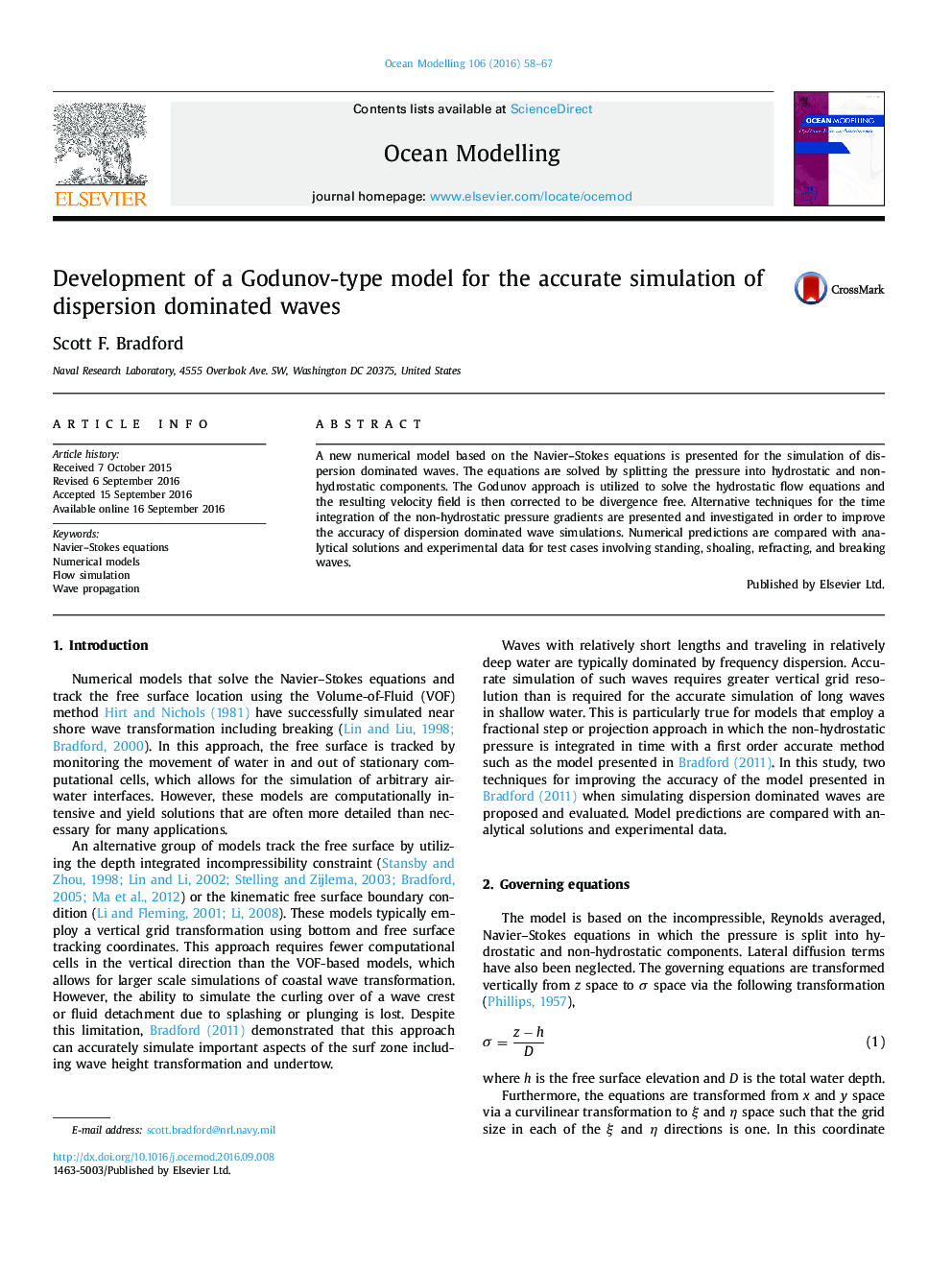| Article ID | Journal | Published Year | Pages | File Type |
|---|---|---|---|---|
| 4551949 | Ocean Modelling | 2016 | 10 Pages |
•The computational efficiency of a previously developed free surface flow model is improved.•The equations are solved by splitting the pressure into hydrostatic and non-hydrostatic components.•Time integration of the non-hydrostatic pressure gradients is investigated to accurately simulate dispersion dominated waves.•Model predictions are compared to analytical solutions and experimental data for standing, shoaling, and breaking waves.
A new numerical model based on the Navier–Stokes equations is presented for the simulation of dispersion dominated waves. The equations are solved by splitting the pressure into hydrostatic and non-hydrostatic components. The Godunov approach is utilized to solve the hydrostatic flow equations and the resulting velocity field is then corrected to be divergence free. Alternative techniques for the time integration of the non-hydrostatic pressure gradients are presented and investigated in order to improve the accuracy of dispersion dominated wave simulations. Numerical predictions are compared with analytical solutions and experimental data for test cases involving standing, shoaling, refracting, and breaking waves.
